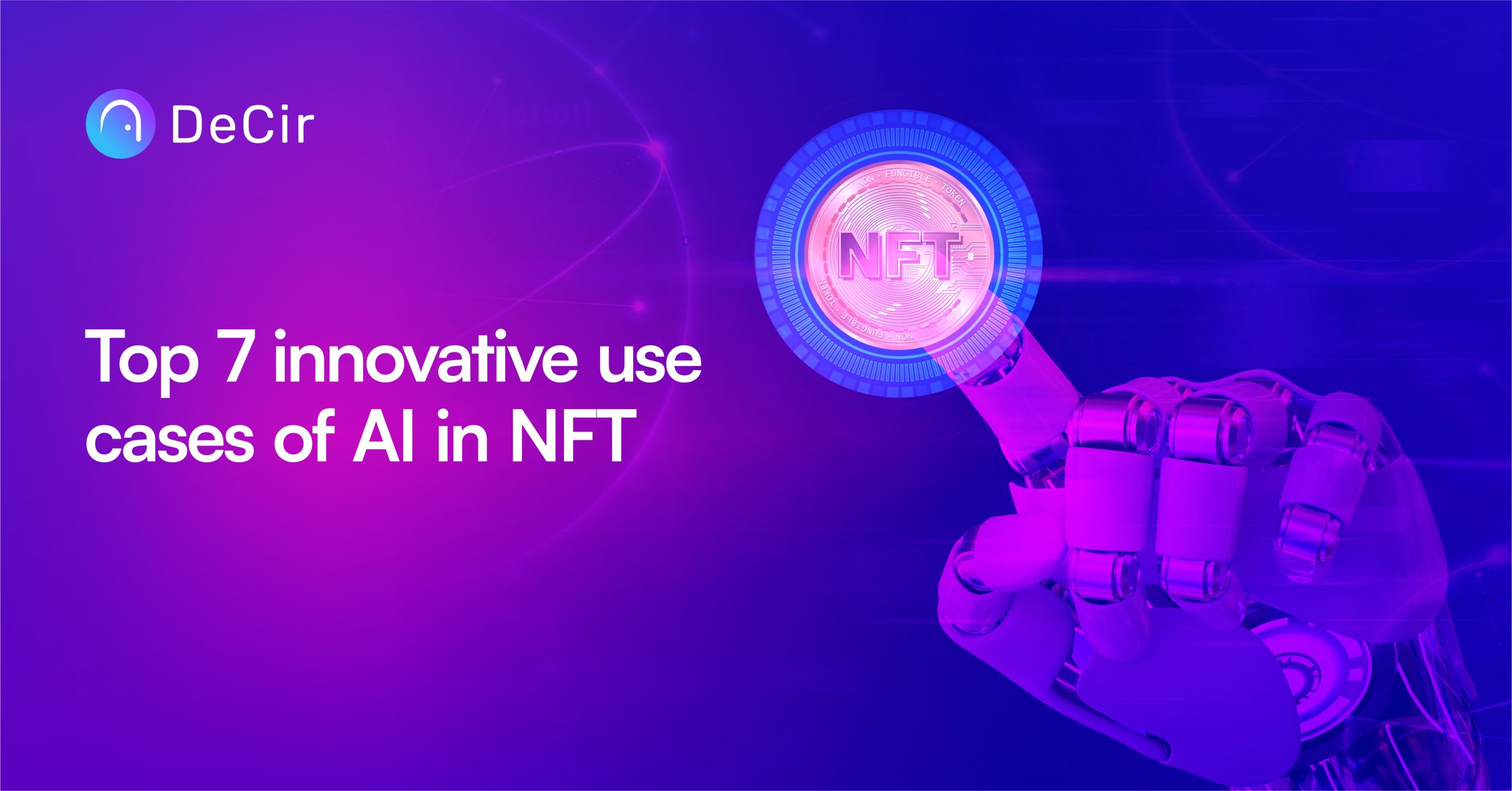The convergence of Artificial Intelligence (AI) and Non-Fungible Tokens (NFTs) has unleashed a wave of innovation in various domains. From generative art to AI-assisted authentication, smart algorithms are reshaping the NFT landscape and revolutionizing how we create, trade, and interact with digital assets. In this article, we explore seven groundbreaking use cases that highlight the transformative power of AI in the NFT ecosystem.
TL;DR
- The fusion of AI and NFTs is transforming art, gaming, and content creation, unlocking new realms of creativity and interactivity.
- AI-driven technologies such as generative art, AI-assisted authentication, and data-driven pricing are reshaping the NFT landscape, offering unique and captivating experiences.
- With AI-generated music, immersive gaming environments, and AI-powered content creation tools, the intersection of AI and NFTs is revolutionizing the way we create, share, and engage with digital assets.
Generative Art and AI NFTs
Generative art and AI NFTs combine the creativity of artists with the computational prowess of AI algorithms. Using predefined datasets, algorithms analyze patterns and generate unique art pieces. While generative art relies on an artist’s code, AI NFTs employ smart generators developed by engineers.
This fusion of technology and artistic expression opens new frontiers in art creation, challenging traditional notions of authorship and pushing the boundaries of visual aesthetics.
AI-Assisted Authentication
Ensuring the authenticity and provenance of digital collectibles is crucial in the NFT space. AI-powered algorithms play a vital role in verifying the genuineness of tokens by examining intricate details and identifying signs of tampering or forgery.
Additionally, these algorithms track the ownership history of NFTs by analyzing digital footprints, creating an immutable record of provenance. By enhancing trust and transparency, AI-assisted authentication instills confidence among collectors, investors, and creators in the NFT market.
AI-Driven Pricing
Determining the value of NFTs can be challenging due to their unique characteristics. AI algorithms analyze vast amounts of market data, including popularity, scarcity, historical sales, and community demand, to derive accurate pricing insights. These algorithms also assess social media trends and community engagement, evaluating sentiment and conversations to gauge interest in specific tokens.
Furthermore, AI algorithms consider the rarity of assets, such as limited editions or unique features, to determine how scarcity influences market value. By providing data-driven pricing analysis, AI empowers participants in the NFT market to make informed decisions.
Also read: How the entertainment industry uses token-gating for mass engagement
AI-Generated Music and Sound NFTs
The marriage of AI and music has resulted in a new realm of possibilities. AI algorithms can compose original music, melodies, and soundscapes, which can then be tokenized as NFTs. Musicians collaborate with machine learning engineers to train neural networks on their music, ensuring compliance with copyright laws.
These AI-generated music NFTs offer exciting avenues for musicians to monetize their work and provide unique experiences for fans. While legal complexities persist, the field continues to flourish, with platforms like Rave 2, JukeBox, and Dance Diffusion showcasing the potential of AI in creating immersive and transformative musical experiences.
AI-Powered Gaming NFTs
The gaming industry is embracing the power of AI to enhance virtual environments and in-game assets. Games like Minecraft and No Man’s Sky utilize procedural generation and randomization algorithms to create dynamically evolving and distinctive game worlds. AI algorithms analyze player data to generate personalized in-game components, catering to individual preferences and enhancing immersion.
Furthermore, the integration of NFTs in gaming allows players to own and customize in-game assets, fostering vibrant in-game economies. This synergy of AI and NFTs revolutionizes game design, offering players unique experiences and ownership over digital assets.
AI-Driven Content Creation
AI algorithms are augmenting content creation by analyzing vast collections of artwork, recognizing artistic styles, and generating unique pieces. These algorithms enable artists to experiment with different modes and styles, fostering creativity and pushing artistic boundaries.
Moreover, AI algorithms assist in crafting animations, virtual worlds, and interactive experiences, transforming the way content is produced and consumed. By harnessing the power of AI, content creators can offer immersive and engaging experiences that captivate audiences in unprecedented ways.
Smart Market Predictions
AI models are reshaping how we navigate the NFT market by forecasting developments and calculating the future worth of tokens. These models analyze massive datasets, identifying patterns and correlations that may elude human observers.
By capturing complex market dynamics, AI-powered predictions provide valuable insights into emerging trends, popular themes, and evolving collector preferences. This information empowers investors, creators, and collectors to make informed decisions, optimizing their engagement with the NFT ecosystem.
Interesting read: How DeCir adds value to creators through token-gating
Conclusion
The intersection of AI and NFTs presents an array of innovative use cases that are transforming the way we create, trade, and experience digital assets. From generative art to AI-assisted authentication, these applications demonstrate the power of AI algorithms in enhancing trust, transparency, and value within the NFT ecosystem. As AI continues to advance, it will undoubtedly unlock even more possibilities, shaping the future of the NFT space and opening new avenues for artistic expression, economic opportunities, and immersive experiences.


